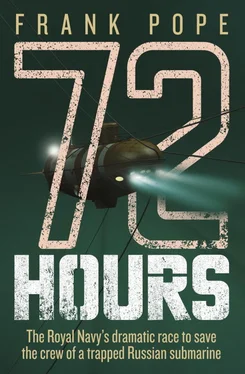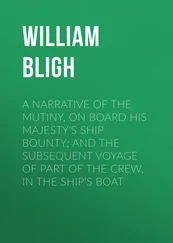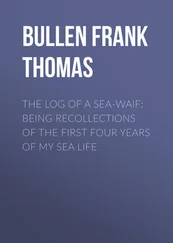The catalogue of errors that had caused the Kursk tragedy had given fuel to elements of the Russian press as they stoked the population’s fury against their apparently uncaring new president, Vladimir Putin. But despite government attempts to pin the accident on an attack or a collision with an American or British submarine, it was widely known that bad maintenance and poor infrastructure were to blame for the Kursk disaster. Those who survived the initial explosion and its aftershocks might have had a chance had it not been for more equipment troubles, combined with the Russian Navy’s inertia and unwillingness to take the initiative.
Unfortunately – as both Bolonin and Lepetyukha knew – with no money to invest and no impetus for change, nothing had been done since to purge these problems from the Navy.
The scandal had altered one thing, however. Politicians had pushed for what was seen as mostly a cosmetic fix, a sticking-plaster for the diseased Navy and something to placate the mourners. The Navy had been allowed to acquire some new rescue equipment. It was nowhere near enough to refurbish the rescue capabilities of such a geographically dispersed navy, but it was something. Among these were eight ‘atmospheric diving suits’ from the Ocean Works International Corporation. Nicknamed ‘Newtsuits’, they functioned as human-shaped exoskeletons that could carry a man to 365 metres and still leave him able to move arms and legs. One had come to the Pacific fleet, Lepetyukha knew.
The Navy had also bought several of the latest undersea robots, or ‘Remotely Operated Vehicles’, from two British companies. Guided from a surface vessel via a long umbilical cable, they were able to operate in depths of thousands of metres and could do most of the work that a submersible could. They did so without having to house human operators. They were so much easier and cheaper to use that manned vehicles were becoming rare in the commercial world, and increasingly in the military too.
On the deck of the Georgy Kozmin were two of these brand-new robots, Bolonin and Lepetyukha both knew. One was a small, inspection ROV which carried only video cameras, but the other came equipped with cutters. Bolonin had used it himself, and knew well what it was capable of. The British made Venom ROV was a model that was used a lot in the oil industry and would most likely be able to snip each of the cables that were trapping them against the hydrophone array. It might take a few hours to do it, but the equipment was right there above them. All they had to do was hang on, keep calm, and wait for their surface support ship to deploy the ROV. It would not be long before they’d be free to float back up to the surface and open that hatch.
Thursday, 4 August
SS + 2 h 30 mins
19.00 Kamchatka
Georgy Kozmin , Berezovya Bay
Novikov looked down from the bridge on the crews hurrying about the back deck and, for the third time that day, cursed his luck. Not only had he been ordered from on high to take on a job without the proper backup equipment, but he’d given in to emotional pressure from below that now left his position even more exposed. None of the crew – himself included – were properly paid. Since the costly Chechen war, spending on defence had plummeted and the Navy’s share of it had dwindled to boot. Five years previously the Navy had got 15 per cent of the budget; now it got between 11 and 12 per cent. Investments in new ships, weaponry, combat training and maintenance facilities were the first to fall away, but now the Navy was struggling to even pay the salaries of the sailors. As a mere Captain 2nd Rank, Novikov had no control over that, but he did have a say in when the men took their holidays. When the only fully trained operator of the new Venom ROV asked to go on leave with his family that week in August, Novikov had agreed.
He ordered the backup ROV team to report to him. To his relief they assured him that they would be able to operate the vehicle. All they needed was for the Georgy Kozmin to hold position over the array. They would then guide the robot down to inspect the problem and free AS-28 from her bonds.
Just as Captain Lepetyukha on AS-28 had not wanted to involve outsiders until absolutely necessary, Novikov chose not to alert Navy command just yet. The bearer of bad tidings often got the full brunt of the blame. And, after all, there was still a good chance that they’d be able to recover the submersible without help. He carefully checked the current, then ran upstream for 500 metres, dropped anchor in the deep water and allowed KIL-27 to drift back over the antenna. It wasn’t ideal by any means, but it was better than risking the cable drifting into the vessel’s spinning propellers.
Soon after the $5m Venom ROV was deployed things started to go wrong. Although she had an anchor out, the Georgy Kozmin was not a stable platform. She was swinging on her anchor, forcing more and more umbilical cable to be paid out in order for the ROV to stay in one place. But when the ship swung back, the loops of umbilical – carrying high voltages and all the control signals – began coiling in loops around the ROV and its powerful thrusters. Even with a highly experienced crew it would have been a tricky situation.
It wasn’t long before the screen in front of the stand-in ROV pilot suddenly distorted and went blank. The vehicle was dead in the water. The umbilical was reeled in and the ROV recovered. Once everything was on deck the damage – and the culprit – was clear. The umbilical cable – its power lines and the delicate fibre-optic cables – had been badly mangled. With the right knowledge and equipment it could be patched up and made watertight enough to withstand the pressure 200 metres down, but neither was available on the Kozmin.
Novikov decided that enough was enough. He picked up the radio to the commanders of 70076 military unit in Petropavlosk and reported the situation.
A large part of the reason the Kursk tragedy had become such a scandal was the time it had taken for the bad news to pass up the chain of command. Admiral Vyacheslav Popov, the commander of the northern fleet, took 12 hours after the explosion to declare a fleet-wide alarm. It was 19 hours before President Putin had learnt that Russia had lost one of its most advanced nuclear submarines and over 100 sailors.
Whatever the penalty, Captain Novikov now had no option but to explain the situation as completely as he could. He made his report, confirming that their Venom ROV was out of action but that they would be attempting a survey using their second, smaller Tiger ROV. It was only a mobile video camera, but it should at least give them a better idea of the situation on the seabed.
Once the report of AS-28 ’s predicament reached Petropavlosk headquarters the news rapidly spread to the highest echelons of the Russian Navy. The last thing they wanted was an embarrassing accident now. Later that same month, on 19 August, Russia was joining China in an unprecedented joint military exercise. A full naval squadron – including submarines and 17 long-haul aircraft – would take part in settling an imaginary conflict in a foreign land. It was called ‘Peace Mission 2005’, but the bark at US Naval power on the other side of the Pacific was thinly veiled.
Russia still wore the costume of a superpower, but it was threadbare and China’s economic muscle was increasingly intimidating. But, for now, their tactical alliance suited them both. Oil flowed south from Siberia in new pipelines to China, and Russia’s military engineers were some of the best in the world. Every year the Chinese imported millions of dollars’ worth of Russian military hardware (although the quantities were beginning to drop as Chinese scientists reverse-engineered the designs for fabrication in their own factories).
Читать дальше












